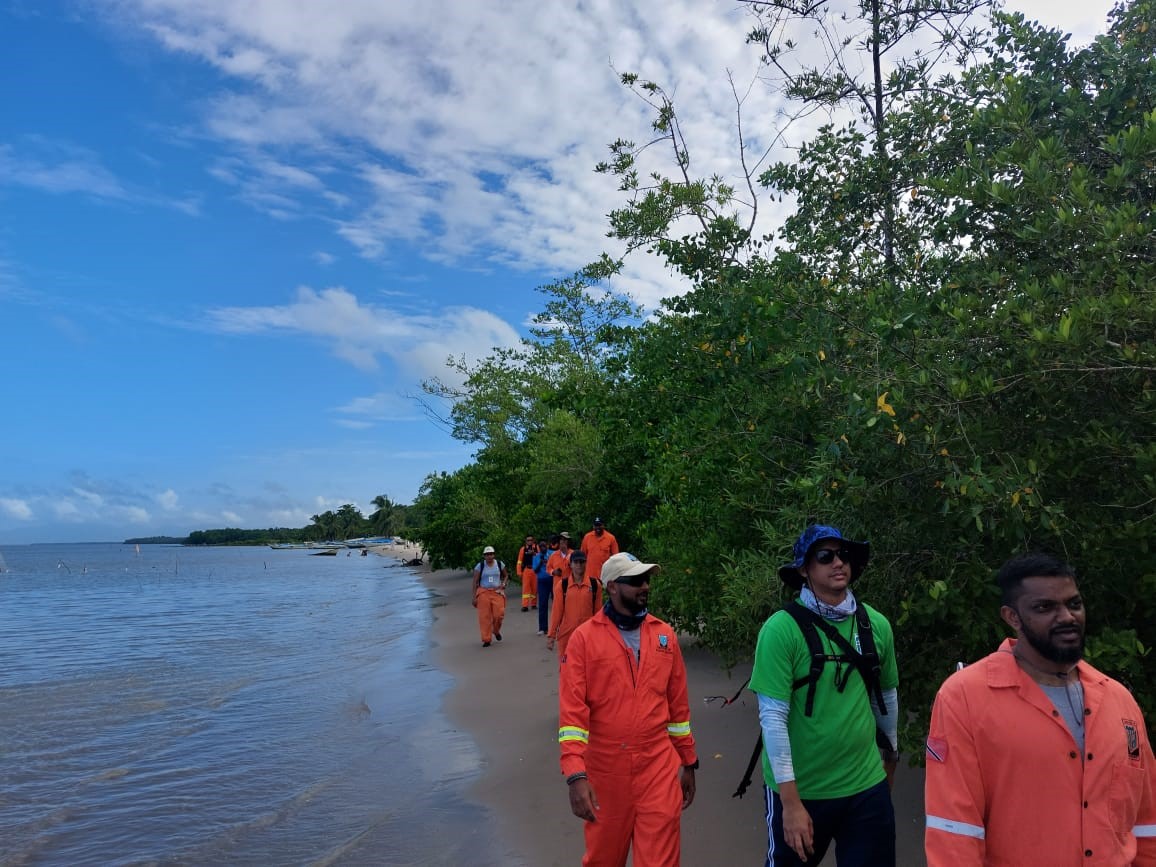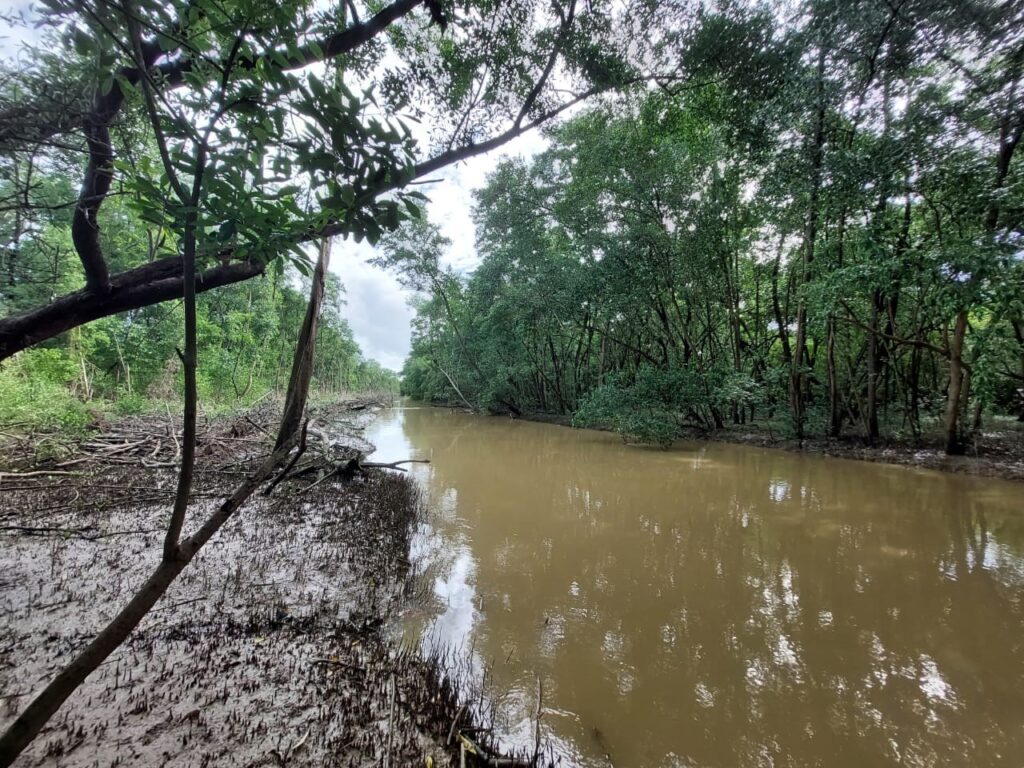
(NGC, 24.Nov.2023) — The National Gas Company of Trinidad and Tobago Limited (NGC) is joining the effort to stem the decline in mangrove health in Trinidad and Tobago. This week, the company signed a Memorandum of Agreement (MoA) with the Institute of Marine Affairs (IMA), to implement a Mangrove Rehabilitation Project in the Carli Bay/Point Lisas area.
This collaboration will promote the restoration and protection of the mangroves in a region that plays a critical role in the country’s environmental and economic landscape.
Once characterised by a continuous wetland, the Couva/Carli Bay area has seen its wetland ecosystem fragment into the Couva River/Lisas Bay mangrove forest, the North Claxton Bay mangrove, and the South Claxton Bay mangrove forest. While there has been an expansion of the Couva River/Lisas Bay system, with the mangrove extending onto mudflats, the northern section of the Couva River has suffered from decline, in some areas significant (also described as mangrove die-back).
This troubling trend has persisted for over a decade, with no substantial natural mangrove regeneration observed since 2019.
The Institute, with the support of NGC, hopes to reclaim the mangrove in “die-back” areas to enhance the mangrove health and functionality.
In 2005, NGC began a reforestation programme as part of a Certificate of Environmental Clearance requirement for the CIP/BUD pipeline construction projects and the Union Industrial Estate development. The programme was completed this year with the final handover of 315 hectares of reforested land to the Forestry Division of the Ministry of Agriculture.


President of NGC, Mr. Mark Loquan, said at the signing ceremony: “This MOU underscores our commitment to strengthening and protecting our environment and working with the communities that are sustained by it. As we continue our focus on environmental preservation, we have created the Beyond 315 Programme, through which we will expand on the work we completed under our reforestation programme. This mangrove restoration project is part of the Beyond 315 programme and also aligns with our ‘No Net Loss’ principle, as well as our vision to promote green values such as conservation, energy efficiency, and renewable energy.”
In working with the IMA, NGC will utilise its satellite technology and drones, originally deployed for aerial monitoring of its assets, to monitor coastal erosion, detect changes in coastal wetlands, and assess shifts in mangrove ecosystems and general shoreline conditions. This advanced technology will provide critical data for informed decision-making throughout the project’s implementation.
“We are pleased to support the IMA over the next three years as it works to protect Trinidad and Tobago’s delicate and vital ecosystem. By combining expertise, resources, and cutting-edge technology, this project exemplifies the power of public-private partnerships in addressing pressing environmental challenges,” Loquan added.
Dr Ava Maxam, Director of the IMA, added: “This is one of those projects that can make a difference as an example globally of how partnership between government and industrial corporations should work with the right elements in place. It will demonstrate how incorporating green or soft engineering can be more sustainable in the long run regarding the rehabilitation and restoration of wetlands.”
The IMA will be assessing the reason for the “die back” and addressing the causes of the mangrove loss as an integral part of the restoration of this wetland. Dr Maxam went on to add that the IMA is very excited about the partnership, and the talent and experience that both sides are bringing to the table in the effort to restore threatened ecosystems.
In addition to the restoration of the mangrove, the project will generate products for a public education campaign and a capacity-building programme, which form part of the initiative. The IMA and NGC will work to raise awareness across neighbouring communities on the mangrove’s vital role and how it can be protected.
____________________

